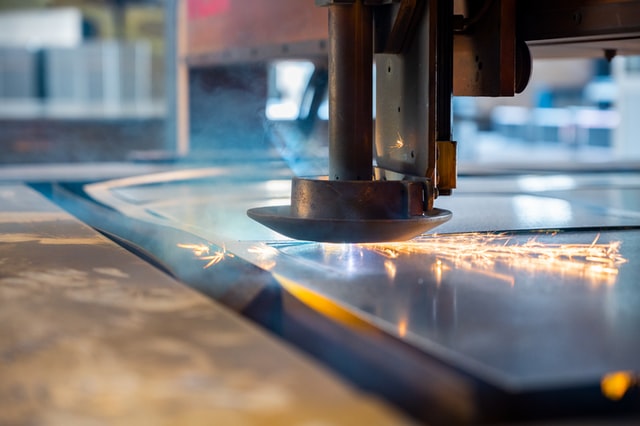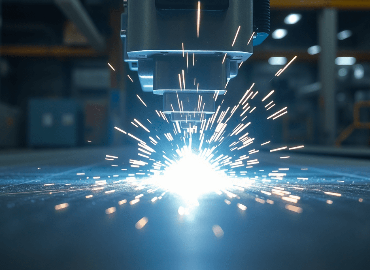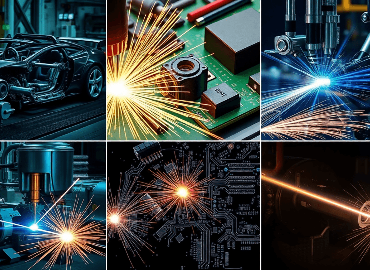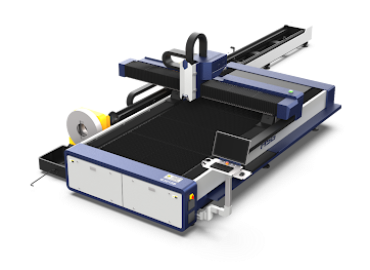Laser cutters can cut many types of metals, from stainless steel to mild steel and non-ferrous metals as well. Reflective metals such as aluminium are, however, difficult to cut. In these situations, to cut the metals, fibre lasers are used as it is a suitable alternative.
One of the most significant benefits of laser cutting is proficiency in cutting a vast range of substances, but one should be aware of the characteristics of each and every material because some of the substances need more care & vigilance while cutting them.
The thickness of the material can be up to 30 mm. The absolute thickness actually relies on the laser cutting assistance. It somewhat fluctuates based on the power & ability of the laser and also the skills & knowledge of the machine operator.
Here are 5 materials that are unsafe to cut with a laser cutter:
Plastics - Acrylic, PMMA and Lucite are all see-through plastics. All of them also leave a great finish when laser cut. The edges are melted in a way that they seem polished.
POM - This one is another that can be cut by plastic laser cutters. POM is a widely used plastic in the engineering sector. For example, it's used in producing guiding and sliding gears, elements, food packaging, medical instruments, etc. The capability to accomplish complicated cuts with lasers absolutely contributes to various utilisation of POM in different sectors.
Paper & Cardboard - Yes, you read that right! Paper & Cardboard are also favourable for laser cutting. That’s actually how the outstanding detailed wedding invitations are created.
Wood - There are different categories of wood which include MDF and plywood. These two are favourable for cutting. However, you should be familiar with the oils or resin because they are highly risky and pose a threat of catching fire.
A CNC laser cutter can perform on a broad range of substances. There are many substances that can be cut by the CNC laser cutters, such as cork, wood, foam, paper and acrylic and many other metals. Yet, there are certain substances that don't cooperate with the laser cutting machines due to their inability to survive during the procedure. Also, some of them can be awfully risky & dangerous to machines as well as human beings.
Therefore, it is highly essential for you to review the lists once or twice before getting started to cut the substances that you have not utilised earlier. It will not be clear & evident always as to which type of materials will work significantly on the machines.
Always keep in your mind that If you are cutting any material by making use of a laser cutter, it eventually becomes your responsibility to confirm that your laser machine has the ability to cut those substances.
So, after discussing the materials that are safe to cut using laser cutters, we will now read about the materials that cannot be cut using laser cutters.
Here is the list of materials that cannot be cut using a laser:
PVC - PVC, also known as polyvinyl chloride, is artificial leather. If it is exposed to a thermal procedure, i.e. If we try to cut PVC with a laser cutting machine, it will generate hydrochloric acid, chlorine gas, and many other toxic gasses. The laser machine can be destroyed by chlorine, optics can be ruined, and it can also cause the metal of the device to deteriorate & the control system can get distorted. Therefore, PVC cutting should be left for mechanical methods rather.
Thick Polycarbonate/Lexan - Polycarbonate is alright to cut with laser cutters, but this may also tend to result in patches of discolouration. Polycarbonate consumes infrared radiation, which laser cutters utilise to cut the materials and due to this, the possibility of catching fire is elevated. In many cases, the laser cutter will cut the material inaccurately & badly, and even the material may discolour poorly, and it can start to burn. Polycarbonate/Lexan is generally found as a flat sheet substance.
The window of the laser cutter is made of polycarbonate because it strongly absorbs infrared radiation. This is the circumstance where the light occurs, which the laser cutter utilises to cut the materials, and that is the reason why it is unsuccessful in cutting Polycarbonate. It is a miserable choice for laser cutting as it generates long stringy clouds of fumes that drift up, ruin the optics, and tangle up the device.
ABS - Usually, the laser beam is adequately hot so it can make the material vaporise, which in turn assists in cutting, but this is not the same with ABS yet. It radiates cyanide gas and is likely to melt, which results in a chaotic working table and a cut with an inferior quality, which is not satisfactory at all. However, ABS cannot be cut well by a laser cutter.
It is more likely to meltdown than to vaporise and has an immense opportunity of catching on fire and leaving behind melted cloying residues on the vector cutting grid, which may damage the material of the device. It also does not inscribe well. While cutting the ABS plastic, it emits hydrogen cyanide, which is a toxic fume and harmful to human beings as well as to the environment.
Epoxy - Epoxy, is an aliphatic resin which is actually a cross-linked carbon chain. It cannot be cut using a CO2 laser cutting machine, and it concludes in a burned mess that creates toxic smoke such as cyanide. Laser cutters should not be used on items that are covered in epoxy resins. Fibreglass is one of the examples which contain Epoxy. Fibreglass is a combination of two elements, i.e. glass and epoxy resin, that cannot be cut, and if we attempt to cut, it launches toxic gasses and epoxy resin (fumes).
But even when these toxic gasses are not emitted, the mixtures are difficult to attain high-quality cuts, etch or engraving because of the heterogeneous personality of the material and the considerably several melting points between the fibreglass and polymer matrix composite substances. In the end, it is impossible to find a suitable setting that will work accordingly, cutting both types of substances.
Polystyrene Or Polypropylene Foam - Polystyrene & Polypropylene foams both of them tend to catch fire very shortly. Also, there are some other issues related to them, but the trait of catching fire should be a reason enough for you to avoid cutting these materials using laser cutters. Polystyrene catches fire quickly & melts down, and it can only be cut into thin pieces.
Similar to Polystyrene, Polypropylene also melts and catches fire easily, and the dissolved residues continue to burn, which eventually gets transformed into rock-hard drips. Polypropylene does not generally generate high-quality engravings as it often melts more than it ablates. It has a really low melting point and instantly grasps heat, which results in the bending of thin slabs. Cutting polypropylene foam is a risky job, and one should avoid doing this.
There are a few more materials that should also be avoided. They are :
HDPE/milk bottle plastic as it catches fire instantly and melts easily.
Coated Carbon Fibre, because it emits toxic gasses, it can be cut but with some fraying.
Any food item
Ceramic Tiles
Neoprene rubber as it includes chlorine and is a substantial safety threat.
Conclusion
So, we have covered almost all the materials that are basically safe and unsafe to be cut by using laser cutters. This article gives a clear idea of what one should avoid to cut and be safe. If you have any further queries related to the things mentioned in this article, feel free to contact us.






